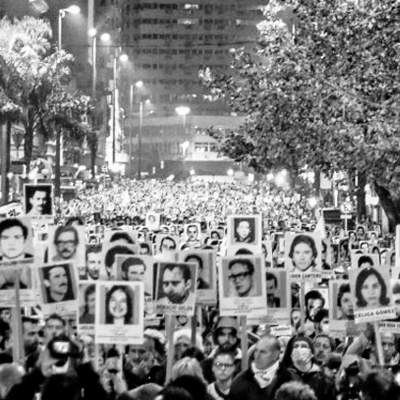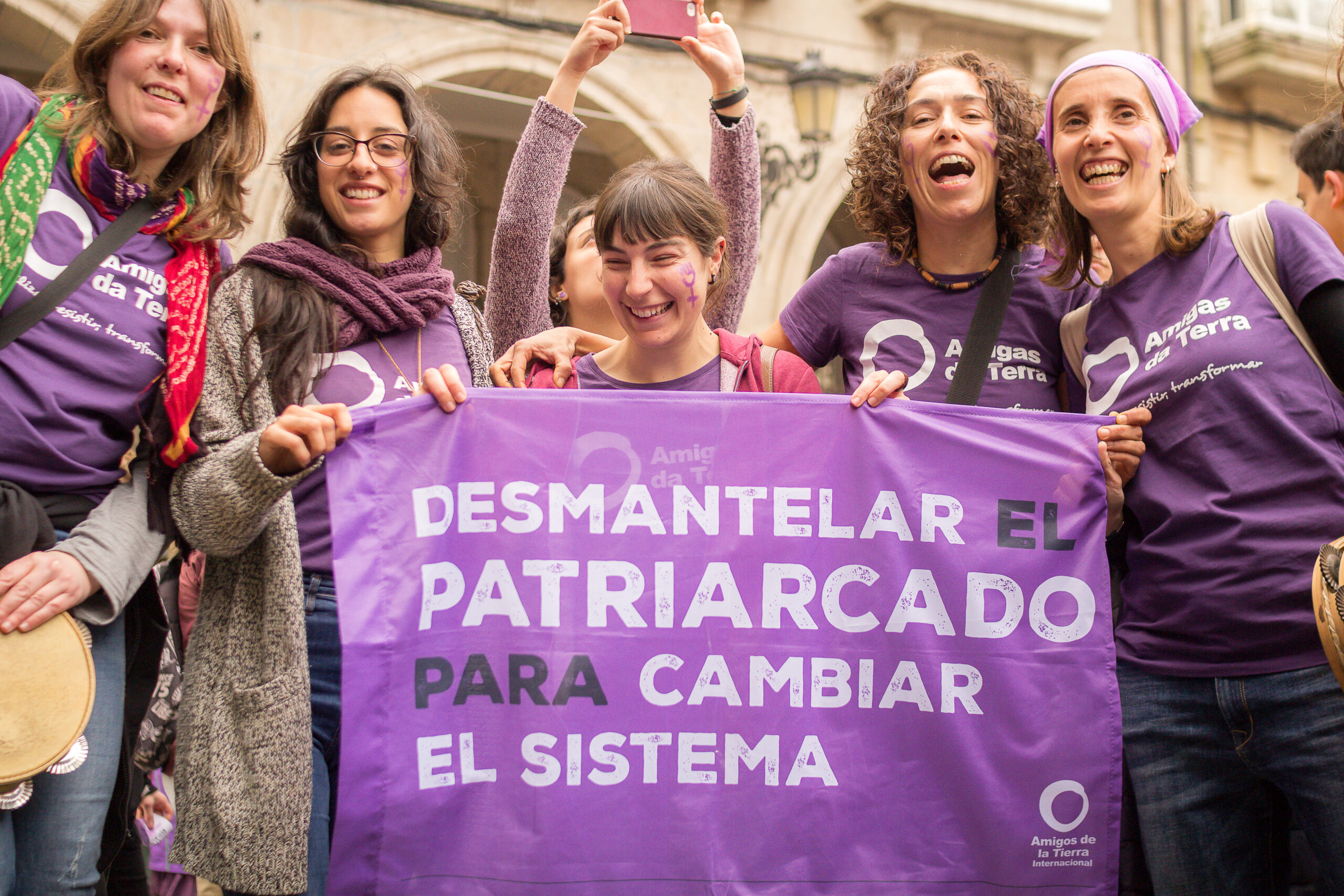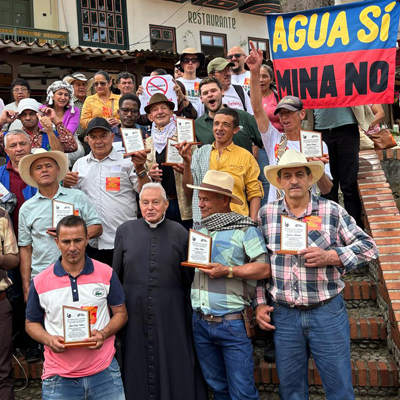Mass March in Uruguay demands response on crimes against humanity
27th March of Silence, for Truth, Justice and Never Again
 Pedal Uy
Pedal Uy
On May 20, 1976, the State terrorism established by the last civic-military dictatorship in Uruguay (1973-1985), murdered four Uruguayan exiles in Buenos Aires, capital of Argentina. Two legislators: Héctor Gutiérrez Ruiz and Zelmar Michelini, and two militants of the National Liberation Movement – Tupamaros (MLN-T): Rosario Barredo and William Whitelaw.
These murders were part of what would later be known as the Plan Cóndor, repressive actions coordinated between the dictatorships of the 1970s in the Southern Cone.
This date became a milestone and a symbol of struggle. Since 1996, every May 20, the organization Madres y Familiares de Detenidos Desaparecidos (FAMIDESA, Mothers and Relatives of Disappeared Detainees) has called for a silent march, carrying in their hands the faces of 197 people who disappeared during the last dictatorship, demanding truth and justice. FAMIDESA thus works on memory, so that there will never again be State terrorism, and demands answers to the question Where are they?
2022 is a special year for this historic mobilization for different reasons. One of them is the return to the streets after two years of pandemic, and another is the context of increasing impunity hand in hand with the current national government, a coalition of right-wing parties made up of the parties Nacional, Colorado, Independiente, De la Gente and Cabildo Abierto. The latter party is made up of ex-military and hierarchs of the Armed Forces.
The torture, rape, murder and enforced disappearance of people were perpetrated by agents of the Uruguayan State, not only in the dictatorial period, but also in previous years, when fierce repression was deployed and the Early Security Measures (1968) were installed. The State is then responsible for the worst crimes against humanity committed during that dark period of Uruguayan history, and is therefore responsible for investigating and responding today.
There are innumerable conjunctural events involving representatives of the parties of the governing coalition that expose impunity in Uruguay; attacks on the National Human Rights Institution and the Ombudsman’s Office by legislators; parliamentary initiatives seeking the house arrest of those over 65 years of age (this includes all the repressors who are currently imprisoned); protection with parliamentary forums of political actors who, having information on crimes against humanity, do not denounce them; prohibition of entry to public shows to people wearing FAMIDESA shirts, among others.
Interviewed by Real World Radio, FAMIDESA member Elena Zaffaroni said:
“I believe that impunity is an endemic issue. What has happened with this process after the dictatorship is a consecrated impunity, accepted and imposed by governments, laws that were voted for that impunity. Consecrating impunity, the abuse of power, is unjust, and it was imposed upon us.”
Present. This word spoken by hundreds of thousands of people is the only one that breaks the silence of the march every May 20 and is said after listening to the names of each person disappeared and missing, said by loudspeakers. The struggle is present. The struggle of a people that does not forget and wants answers. This year, the 27th March of Silence was held under the slogan: Where are they? The truth is still sequestered. The State is responsible.
FAMIDESA has the support and participation of many Uruguayan social organizations. It is not a matter of political parties, nor generational. This is how Zaffaroni sees it:
“I believe that young people are teaching us something that we say, but they shape it with more clarity: why is this a current struggle and not only about the past? They tell you: I was born into impunity and this is my present, I don’t want this present, I want the truth about what happened […] it’s not that they support the struggle; it’s their own struggle.”
This year, the march overflowed the streets. It was the march with the most participation in national history. Some media say that there were about 200,000 people who walked in Montevideo carrying posters with the faces of the disappeared, thanks to the initiative of Imágenes del Silencio, which distributed more than 20,000 photos. In addition, there were more than 35 mobilizations throughout the country and even abroad, in cities such as Madrid, London and Paris.
Elena Zaffaroni has been looking for her partner since 1974, as so many mothers look for their children, nieces look for their aunts and uncles, and grandchildren look for their grandparents. Zaffaroni reflected on them:
“The disappeared people have a symbolic value of never again having a dictatorship, that symbolic value that we must find them as a fundamental part of that path of truth and justice, the only path that protects us from authoritarianism.”






